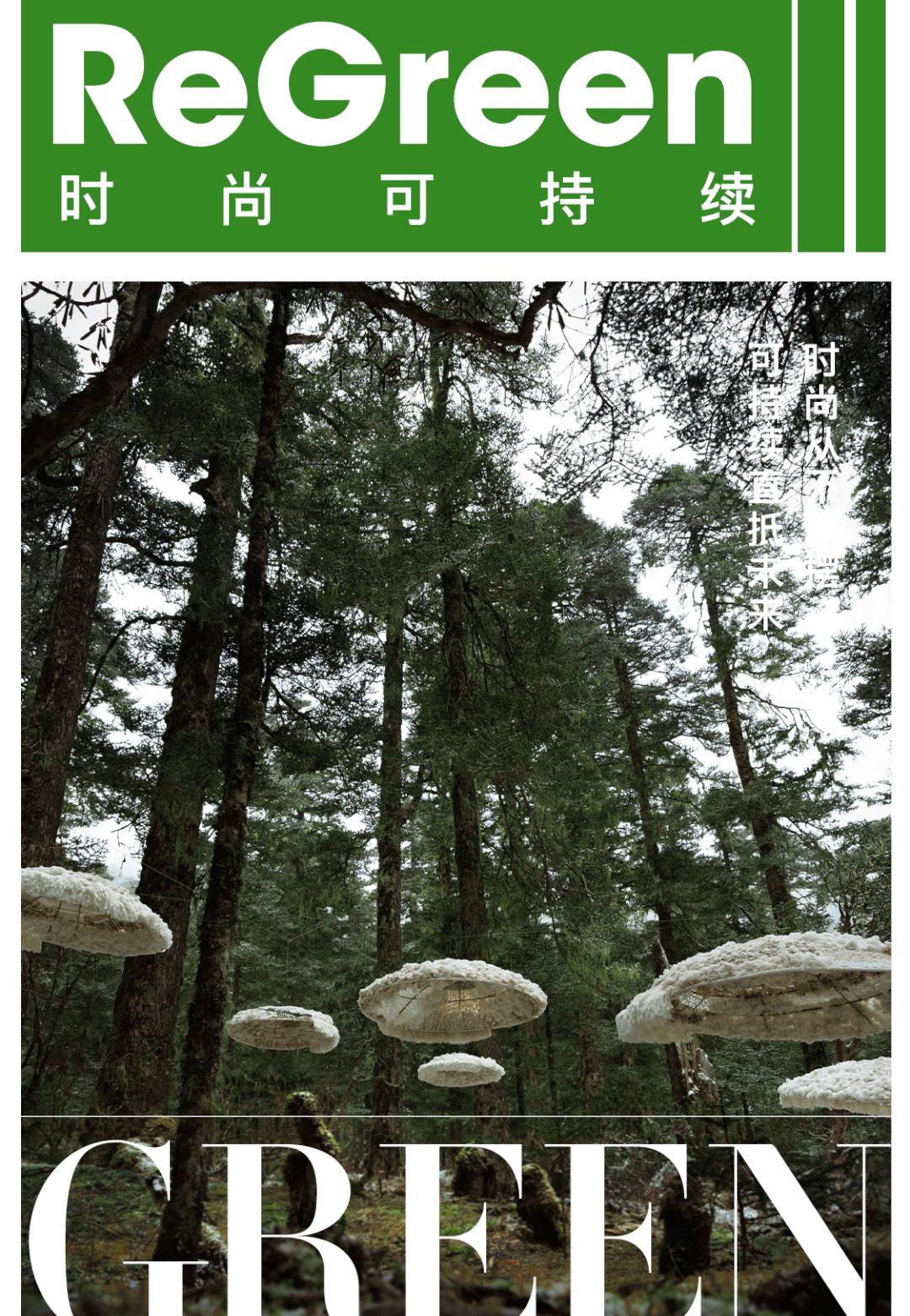
For sustainable fashion, "degradation" is a word that must be mentioned, and it is full of charm and magic. Although it will occupy a certain amount of land resources, it will not burn, add additional chemicals, or consume water resources, so that the materials born in the land will naturally return to the embrace of the land, become nutrients, and join the natural cycle. This makes "degradation" a very romantic process.
Whenever it comes to the disposal of post-consumer clothing, the name of petroleum-based materials is frequently mentioned. While recycling proposals such as recycling recycled polyester and Remake retrofit innovations are indeed good ways to solve problems, if degradable materials can be used as a canvas for inspiration from the design and development stage, they can further reduce the pressure on the environment of discarded clothing.
Driven by biochemistry and material science, polylactic acid, active filaments, environmentally friendly cellulose fibers... More and more environmentally friendly materials are being met, and what is even more surprising is that their diverse characteristics can not only contribute to the manufacturing industry, but also provide a more interesting and lively driving force for the sustainable development of the fashion industry.
Polylactic acid (PLA) is a new type of biodegradable material made from starch raw materials proposed by renewable plant resources such as corn. It has good biodegradability, can be completely degraded by microorganisms in nature after use, and finally produces carbon dioxide and water, does not pollute the environment, and is recognized as an environmentally friendly material.
Doublet's "bone suit"
Previously, the Doublet brand released a bone suit that uses 100% polylactic acid material to interpret a short film with infinite reversal.
Doublet bone suit
Recreate the dream forest of the clothing bank
Recently, Zhang Na, founder of Reclothing Bank, was invited to participate in the 8th Annual Animation Aesthetics Biennale at MoCA Museum of Contemporary Art Shanghai, bringing the artwork "Miffy, the Spirit of Love of the Angel". Inspired by "Earth", she used PLA polylactic acid extracted from corn to create a degradable vegan fur, creating a dream forest for Miffy.
"Blazing Angel Spirit of Love Miffy"
Bananai's "Green Plan"
Zero-carbon tencel ™ fibers are fully degraded in just eight weeks under experimental conditions and 100% biodegradable in a variety of different natural environments. At the same time, due to the use of renewable energy in the production process, carbon emissions are reduced, carbon offsets are achieved, and carbon footprint is reduced, and zero-carbon tencel ™ fiber is also certified as the first carbon neutral fiber product in the industry.
The "Green Plan" is an important environmental protection attempt for sustainable development in Bananai, which creates a new green body feeling by selecting natural new materials for multi-category product creation. Last year, Banana's "Green Project" joined hands with Lenzing Group to create Bananai 301P zero-carbon modal underwear woven from zero-carbon tencel ™ fiber, and called on consumers to participate in the national environmental protection action of "Planting Flowers Together", and convey vitality and beauty with the help of degradable flower paper.
A product made from zero-carbon tencel in bananas
On the packaging, banana is used
100% recycled and reused Australian imported kraft cardboard
Filippa K's revolutionary manifesto
Filippa K announced that it will introduce new recyclable and renewable materials in its spring/summer 2024 collection, released this autumn, through cooperation with Swedish forestry group Södra, Austrian fibre producers Lancez and Riopele.
Filippa K will be in its spring/summer 2024 collection released this fall
Introduction of new recyclable and renewable materials
This revolutionary experimental fiber is a combination of textile waste and lignocellulose, combining Södra's pioneering OnceMore® technology with Lenzing's Refibra™ technology. Jodi Everding, Vice President, Sustainability, Filippa K, said: "We are not alone—collaboration is an important step in the industry's sustainable transformation. For us at Filippa K, it is very important to join forces with like-minded partners who are innovators in their respective fields. ”
At the just-concluded Fall/Winter 2023 London Fashion Week, Patrick McDowell unveiled a collection of sustainable capsules. This series is made using Activated Silk L1, an eco-friendly material developed by biotech company Evolved by Nature using patented technology. Products include down jackets, jackets, sports bags and handbags, and to reduce inventory waste, all items in this collection are sold semi-custom or custom-made.
Patrick McDowell is putting together a collection of capsules
Activated Silk L1 uses Evolved by Nature's exclusive sustainable leather finishing system, which uses natural proteins from silkworm cocoons to create eco-friendly leather that feels more natural to the touch than polyester leather. At the same time, Activated Silk L1 is 100% biodegradable, significantly reducing the stress of post-consumer waste disposal.
Animal fur, leather, as well as materials produced by animals, such as silkworm cocoons and beeswax, have always accompanied the evolution of human beings, and even in modern times with advanced industrial and technological levels, these materials are still indispensable. As awareness increases, initiatives on animal welfare and biodiversity conservation are further implemented, and these naturally degradable materials become more sustainable.
The Woolmark Company's Merino nesting program
Previously, The Woolmark Company invited the independent art institution "More Art" to go deep into the Laojunshan National Nature Reserve in Yunnan to launch the "Merino Nest Program".
The Woolmark Company's Merino nesting program
The project combines the nature of wild birds to find comfortable materials in nature to build their nests, and creates a natural, renewable and degradable Merino wool art installation, providing excellent natural materials for birds to nest and reproduce.
Edited by Usasa
Design: Poplar wood
Image source: Web